What is a cheese slicer and how to use it?
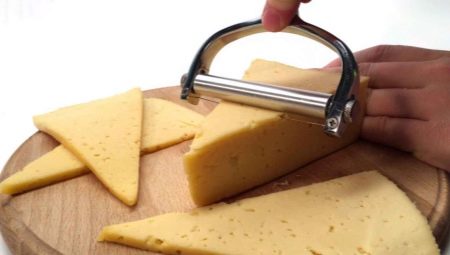
A cheese slicer is an important thing in the household, it allows you to cut cheese into thin slices or cubes without damaging the product. In stores you can find professional and household tools for hard and soft types of cheese, they all differ in the principle of operation, dimensions and configuration. In our article we will talk about what slicers are and how to choose the right model for every day.
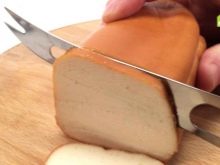
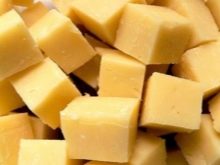

Peculiarities
The cheese slicer is widely in demand in supermarkets and catering establishments; such devices are also used in everyday life. The design of all devices on sale provides for a movable platform, as well as a cutting base. Different models differ in size, shape and functionality.
The material for making blades for cutting is usually stainless steel. However, it is important to remember that stainless steel can be of different grades, so you need to pay attention to its marking. An alloy containing up to 10% nickel and 15% chromium will be optimal. Compositions with the addition of molybdenum and vanadium are distinguished by high strength.
Some manufacturers produce cheese slicers with an antibacterial coating, and this is very important. The fact is that the cheese mass contains many bacteria. In case of insufficient cleaning, some of them remain on the blade, and then go to fresh product and thereby accelerate its deterioration.
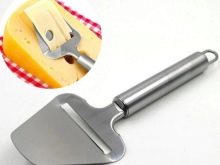
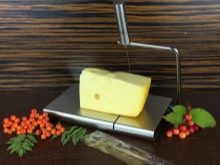
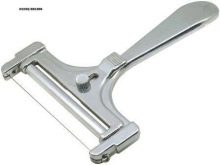
Ceramic cheese slicers are not widely used today. They are only suitable for soft and semi-hard varieties, they are not used for hard products.
The most affordable option is considered to be a plastic tool. However, it is suitable for cutting extremely soft cheeses.
Slicers may differ in sharpening angle. In universal products, this characteristic corresponds to 15 degrees. For cutting hard varieties, it is better to give preference to models at 20-25 degrees. For soft ones, you can purchase a cheese slicer with a 15-degree sharpening. Larger or smaller tilt angles will be ineffective.
Depending on the tasks, the parameters of the blades also vary. So, if you bought cheese in the form of a bar in a store, then 7-10 cm will be enough for gastronomic slicing. But if you need to cut cheese in heads, you will need a large blade. For heads weighing more than 1 kg, it is better to give preference to knives in the form of a string.

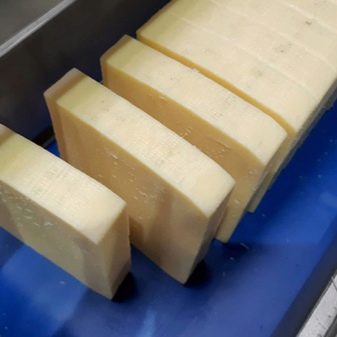
Views
Today, tens of thousands of varieties of cheese are sold in the world. They differ in composition, density, consistency and moisture content. Wherein each product dictates its cutting requirements, taking into account the rules of tasting, the order of serving, as well as the shape of the bar or head.
Accordingly, slicers are different. Circular cutters, guillotines, strings and paddles are in high demand. Devices can be industrial electric or home handheld. Let's dwell on the most popular varieties.
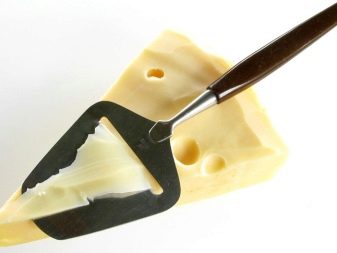
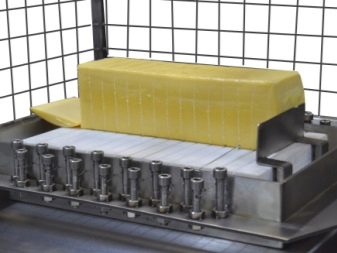
Classic knives
They are suitable for sandwich varieties. They consist of a cutting surface and a handle. The handle is usually positioned just above the blade, thus evenly distributing pressure and making it easier to cut.
These knives often have oval or curly holes.... These models are relevant for soft and semi-hard species. Perforation helps prevent curd from sticking. As a result, the work is simplified and the cutting is more accurate.
For hard grades, air pockets are not required as their consistency prevents sticking. Here, the parameters of the strength of the blade come to the fore, as well as the shape of the knife, which allows you to minimize the applied forces.
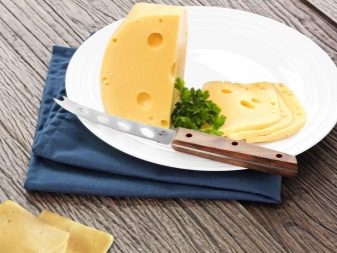
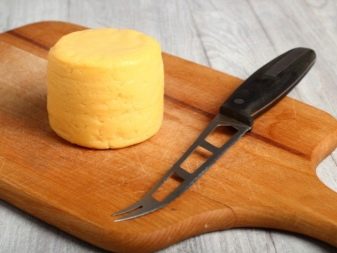
Cheese plane
This tool was invented 100 years ago by a Norwegian carpenter. It is used for slicing semi-hard cheeses. By their design, cheese planers resemble blades with slotted sharpened perforations.
This tool allows you to scrape off the cheese in layers. Such cutting is represented by thin slices.
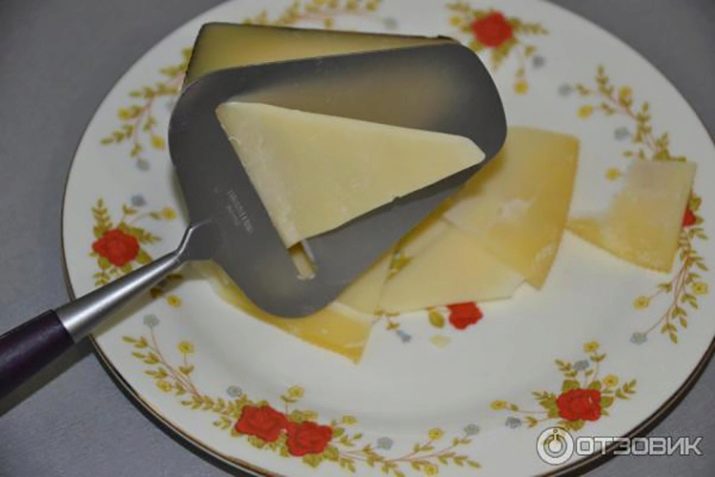
Paddles for soft foods
Soft cheeses are usually cut on the table and eaten immediately. If it is necessary to serve the table, then it is better to use special knives in the form of a pointed blade for serving. Such a tool can resemble a chisel or have a cutting side edge. Slightly less common is the large-fork cutter blade, which is ideal for soft cheese.
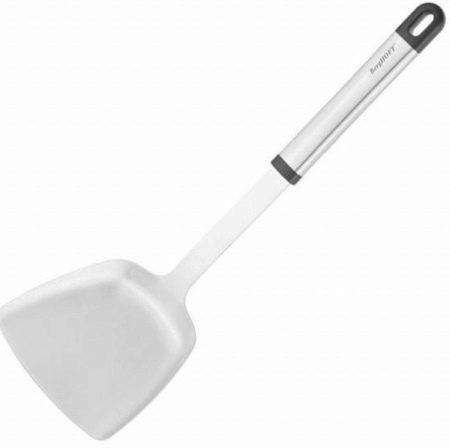
Lever knives
They are like a cheese board in which the knife works like a lever. The base can be wood, metal, marble or granite. This is one of the easiest cheese slicers to use.
All you have to do is just place a block of cheese on the board, adjust the width of the slice and lower the blade.
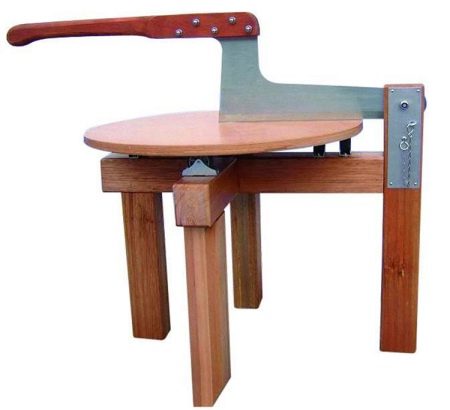
Two-handed slicer
This option is used for slices and cheese heads. Cutting is performed by pressing the handle from top to bottom. Suitable for hard and semi-hard varieties.
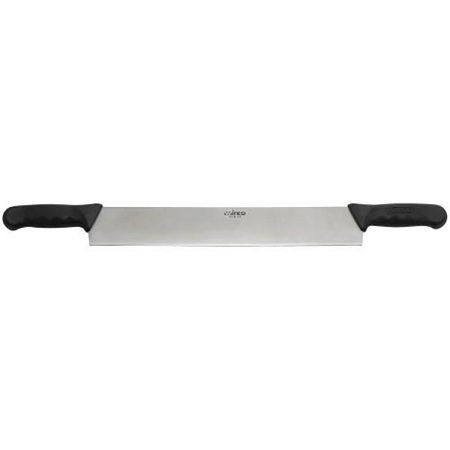
String knife
Works with semi-hard and soft cheeses. The principle of operation is based on cutting with a metal wire attached to the handle. The advantage of this equipment is that the curd does not crumble or stick.
The design is especially widespread when using moldy cheeses, since mold breaks down on contact with a thick blade.
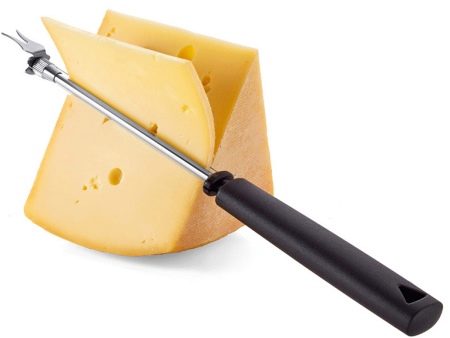
Parmesan knife
For this type of cheese, a special leaf-shaped knife is used, the blades in which are thick and shortened. In appearance, it resembles a scapula, sharp on one side.
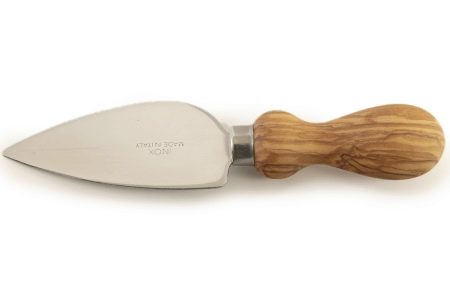
Fat
Certain types of hard cheeses are not cut, but sliced. It is for them that fat was created. This cheese slicer looks like a small diameter rounded board. A pin is located in the center, a removable cone-shaped blade and a handle are attached to it.
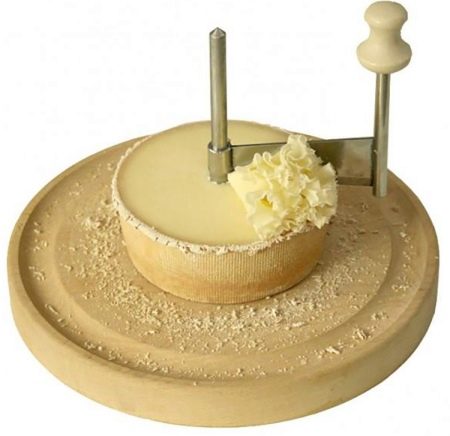
Rating of the best models
Let's get acquainted with the description of the best, according to users, slicers.
- Gourmet fixture intended for slicing soft cheese. The cutting base is made of steel with the addition of molybdenum and vanadium, it is distinguished by its strength and resistance to rust. The blade has five anti-stick holes. The rounded tip has a fork, and an ergonomic plastic handle is attached to the torch along its entire length.
- String Type Cheese Slicer Aluminum used for the preparation of semi-hard cheeses. The cutting side is made of stainless steel, the body of the handle is made of die-cast aluminum.
- One of the most budgetary solutions will be the Mayer & Boch round blade. It is made from thermoplastic and polypropylene, so it can only be used for semi-soft cheeses. Of course, such products cannot be called durable in any way. But their dubious strength is fully justified by the price: the cost of such products does not exceed 100-150 rubles.
- A Gefu cheese slicer is used for mozzarella. It allows you to quickly and without much effort and time to cut pieces of the same size for serving and preparing salads. This is a plastic string model for home use.

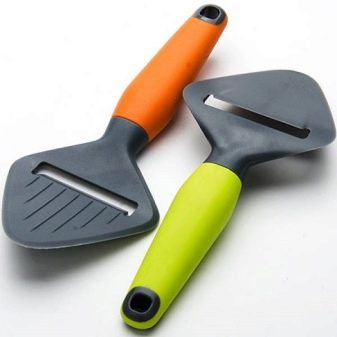
How to use it correctly?
To prepare slicing, you need to free the product from the packaging. In the technical data sheet of the tool, you can find information on the maximum permissible parameters of a prepared piece of cheese. Do not exceed them, otherwise the work performance will drop sharply.
The prepared products are placed in the movable unit. If an automatic cheese slicer is used, it will close and perform the slicing itself. In semi-automatic, the operator sets the thickness and cutting speed, and then starts the device. In manual models, you will have to perform all the manipulations yourself.
At the end of the work, the tool is thoroughly cleaned. To do this, you can use any household chemicals intended for washing dishes. The device can be stored over a wide temperature range. It should be borne in mind that the slicer belongs to the group of dangerous household tools. To reduce the risk of injury to a minimum, you must follow the safety rules and prevent use by children.

Thus, a cheese slicer is a useful thing. It allows you to quickly and beautifully cut cheese. And besides, it frees up a lot of free time. It is easy to use, and you can buy it in every store at affordable prices.








